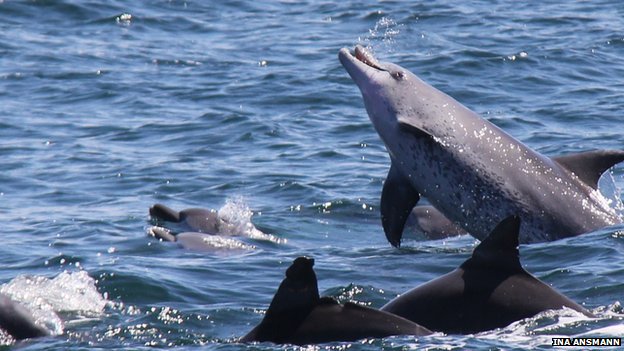
© Ina AnsmannTwo become one: the unification of these two socially distinct groups of bottlenose dolphin demonstrates the intelligence and social adaptability of the species.
A unique social division among a population of bottlenose dolphins in Australia's Moreton Bay has ended, according to a new study.
The dolphins lived as two distinct groups that rarely interacted, one of which foraged on trawler bycatch.
But scientists think that a ban on fishing boats from key areas has brought the two groups together.
They believe these socially flexible mammals have united to hunt for new food sources.
The findings are published in the journal
Animal Behaviour.The Moreton Bay dolphins were thought to be the only recorded example of a single population that consisted of groups not associating with each other.
The split was dubbed "the parting of the pods".
But since the study that discovered the rift, trawlers have been banned from designated areas of the bay leading to a 50% reduction in the fishing effort.
A key area of the bay to the south, where the social split was first observed by a previous study, has been protected.

